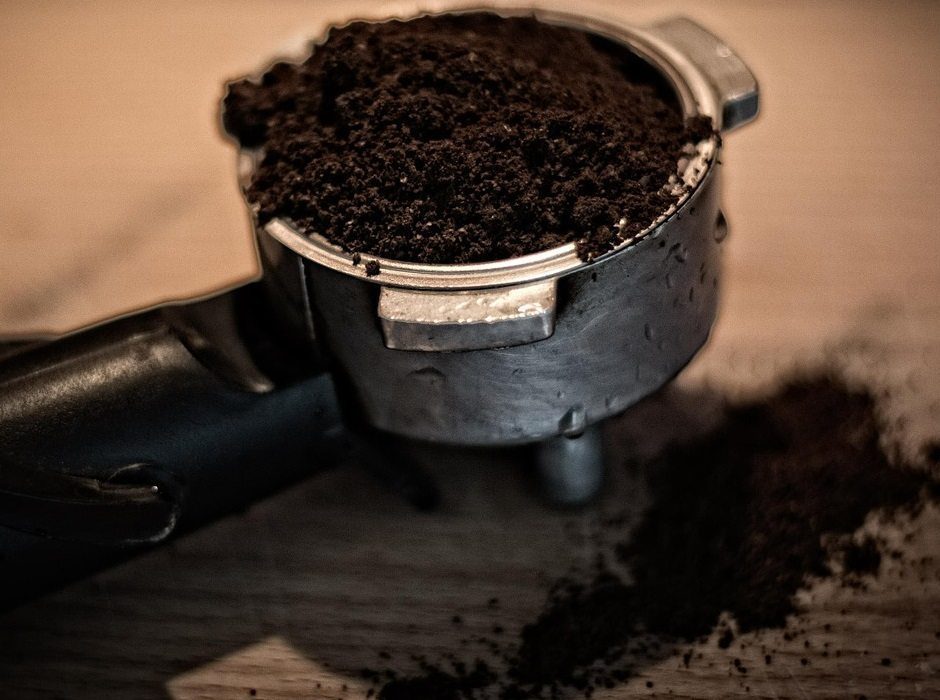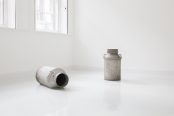[dropcap style=”font-size:100px; color:#992211;”]A[/dropcap]
coating of froth dampens wave motion in liquids.
Surfers knew that already – everyone wants a nice clean wave. However, more importantly, researchers at the American Institute of Physics have applied the theorem to something far more useful: showing that a latte is less likely to spill than a less frothy coffee style.
Which is still no excuse for drinking the filthy lactose gack. ESPRESSO HAS FROTH TOO!
Carrying a full cup of coffee from the kitchen to the dining room can be precarious for a sleepy-eyed caffeine addict who might accidentally send a wave of java sloshing over the rim. But add a bit of foam to the top and the trip becomes easier.
Scientists have found that just a few layers of bubbles can significantly dampen the sloshing motion of liquid. The research, reported in the journal Physics of Fluids, from AIP Publishing, may have applications far beyond breakfast beverages, including the safer transport of liquefied gas in trucks and propellants in rocket engines.
Emilie Dressaire, now an assistant professor of mechanical and aerospace engineering at the New York University Polytechnic School of Engineering, remembers first thinking about foam as a damping mechanism when she was handed a latte at Starbucks and told she probably would not need a stopper to keep it from spilling. When Dressaire began working in the complex fluids group at Princeton University, she learned that her colleagues had noticed a similar phenomenon with a different foamy beverage: beer.
“While I was studying for my Ph.D. in the south of France, we were in a pub, and we noticed that when we were carrying a pint of Guinness, which is a very foamy beer, the sloshing almost didn’t happen at all,” said Alban Sauret, who is currently a researcher at the French National Center for Scientific Research (CNRS).
 Just a few layers of foam are enough to significantly decrease the height of the waves in a sloshing fluid. Image: Alban Sauret/Princeton University
Just a few layers of foam are enough to significantly decrease the height of the waves in a sloshing fluid. Image: Alban Sauret/Princeton University
The scientists took their observations from the coffeehouse and the pub to the laboratory, where they built an apparatus to test the damping power of foam more systematically. They constructed a narrow rectangular container made of glass, which they filled with a solution of water, glycerol (a common substance that increases the fluid viscosity) and the commercial dishwashing detergent Dawn. By injecting air at a constant flow rate through a needle located at the bottom of the rectangular cell, the team created uniform layers of 3-millimeter-diameter bubbles. “The dishwashing foam is very stable, which allowed us to conduct the experiments without the bubbles disappearing,” said François Boulogne, another member of the team.
The researchers experimented with two types of movements, either jolting the apparatus with a quick, side-to-side motion or rocking it steadily back and forth. They recorded the resulting waves with a high-speed camera. They found that just five layers of foam were enough to decrease the height of the waves by a factor of ten.
The team believes that the foam dissipates the energy of the sloshing liquid through friction with the sides of the container. More than five layers of bubbles did not add much additional damping, because the top layers of foam didn’t really move, they said. The team also found that bubbles that do not make contact with the walls of the container do not contribute much added damping.
The problems caused by energetic sloshing go beyond the annoyance of spilled beverages to questions of safety when transporting hazardous liquids like oil and liquefied gas in large tankers. Sloshing can exert considerable pressure forces on the walls of a tanker, which could cause a rupture or disrupt the motion of the vehicle, the researchers say.
The authors hope their research on foam may one day lead to cheap and easy ways to transport large amounts of fluids with minimal sloshing. “The potential applications are much bigger than just beer,” Sauret said.

Some of the news that we find inspiring, diverting, wrong or so very right.



















